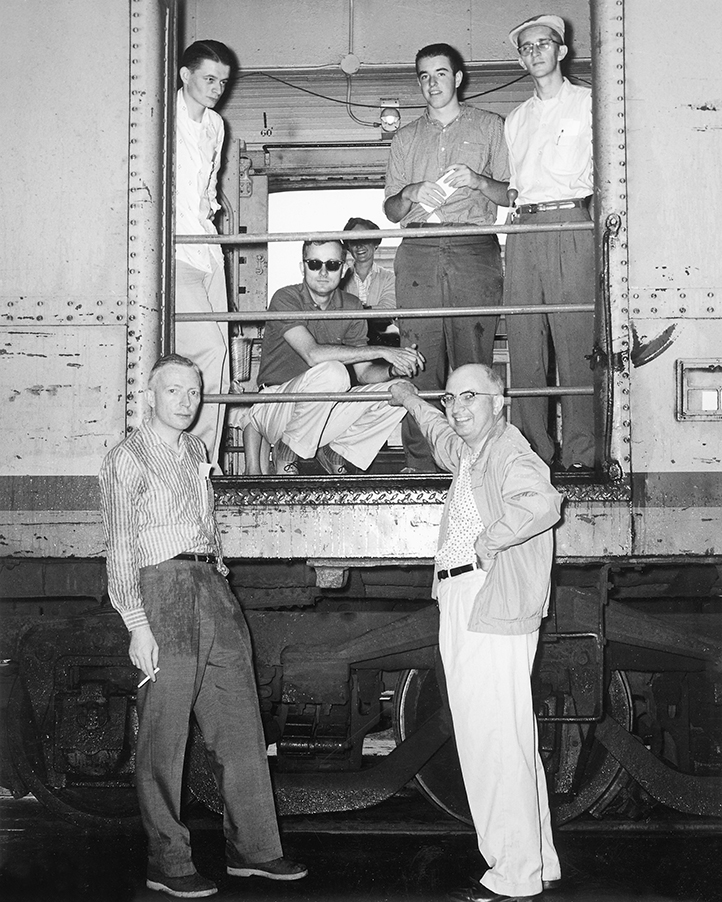Biography
What is far less known about Rose’s art is his photography. Railroads and making pictures of them captured his imagination when he was in his teens. He was a Milwaukeean by birth (his father was an architect who designed industrial buildings and spaces), and Milwaukee was principally an industrial city. So opportunities abounded there for railroad photography, and Chicago’s rail riches—and rail connections to the rest of the nation and continent—were only ninety miles south.
Rose began making railroad pictures when he was fifteen or sixteen; he stopped when he was twenty-two. During those years he photographed the demise of steam and searched out existing steam operations in the U.S., Canada, Mexico, and Guatemala. On these journeys he not only learned about capturing light in just the right way to create an artistically worthy image. He learned about life, the rigors of the railroad, and the personal sacrifices railroaders make. Much of the time Robert Ludwig accompanied him on these treks, both in the United States and in Latin America. Rose wrote about what it could be like:
Ever ridden a freight train? It’s a sobering experience. Ride them for a while and you become part of another world. Where those who couldn’t endure the awkwardness or frustration of normal life, or who were on the run, established levels of endurance most of us couldn’t imagine.
His explorations suggest a complex personality: artist, adventurer, rebel, and highly independent. When nineteen and twenty years old, he worked for Trains magazine at its downtown Milwaukee location. He blazed with talent, creating a painting for a cover and soaking up everything he could learn from David P. Morgan, the magazine’s legendary editor from that period. But he couldn’t suppress his youthfulness even in the edgy atmosphere of an editorial office. One day he left shoes at home and came barefoot to work. As he emerged from the elevator, he caught the displeasured eye of the magazine’s button-down publisher, A.C. Kalmbach, who was not known for casual dress. After service in Viet Nam, Ted Rose hardly picked up a camera again.
His photography collection consists of about 4,400 prints and negatives, all black and white. Their quality suggests his artistic impulses, and selections were shown twice during the 1970s in Santa Fe where he lived and worked during his adult life. Now they are being shown more widely, courtesy of his widow, Polly, and the Center.

Ted Rose, standing, second from right, with the editorial staff of Trains magazine in the early 1960s. Courtesy of Trains magazine
Rose Collection Overview
-
- Gift of Polly Rose
- 4,400 black-and-white prints and negatives
- 1950s and 1960s action shots of steam locomotives
- Coverage focuses on the late steam-era in the midwestern United States, Mexico, the Canadian Prairies, and Guatemala
Reproduction Requests
-
- High resolution scans from the Rose Collection are available for print and electronic reproduction
- To make requests, visit the collections page or send an email to info@railphoto-art.org
Browse Collection
Click here to browse the Ted Rose Collection on Odyssey, the Center’s digital collections database.
